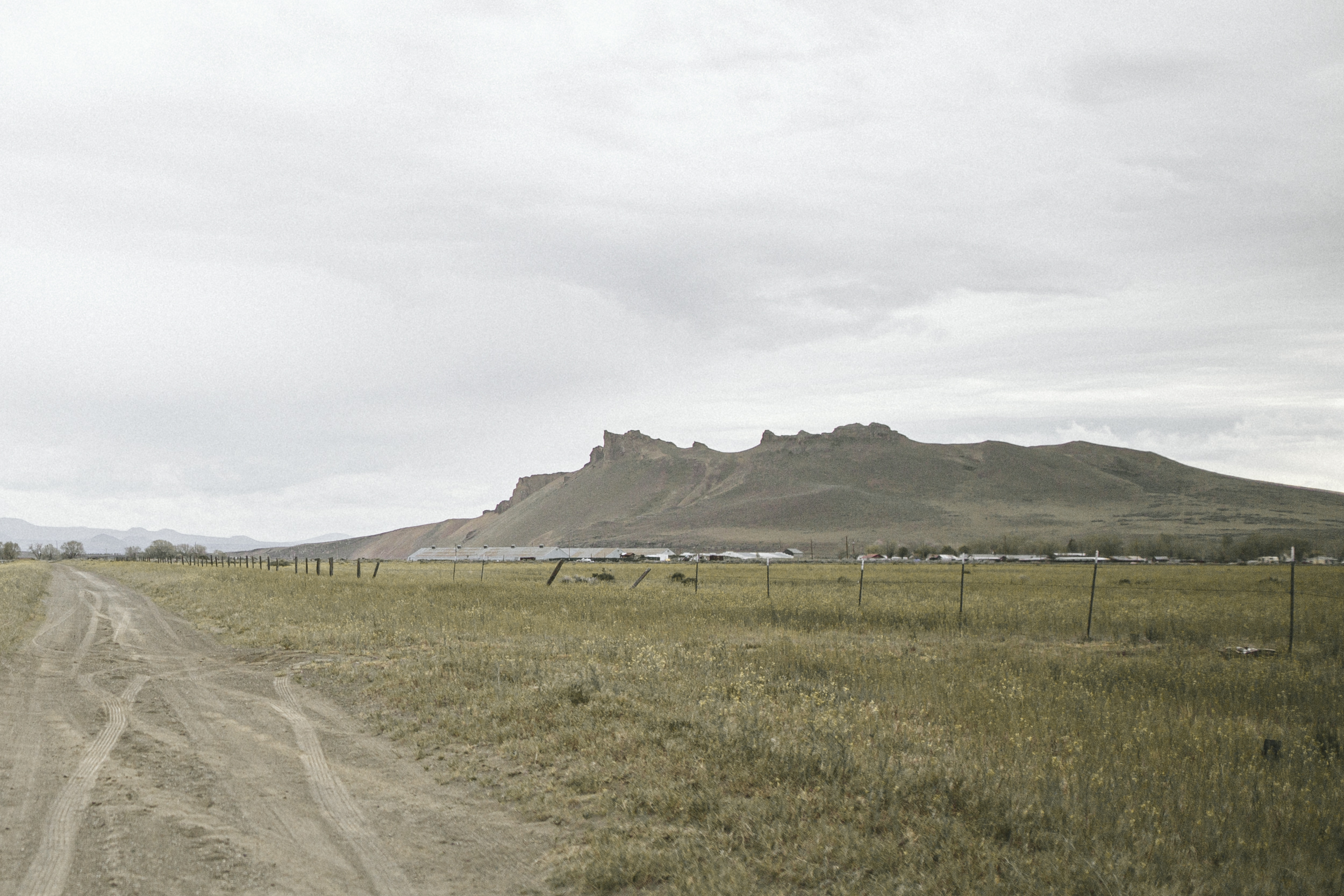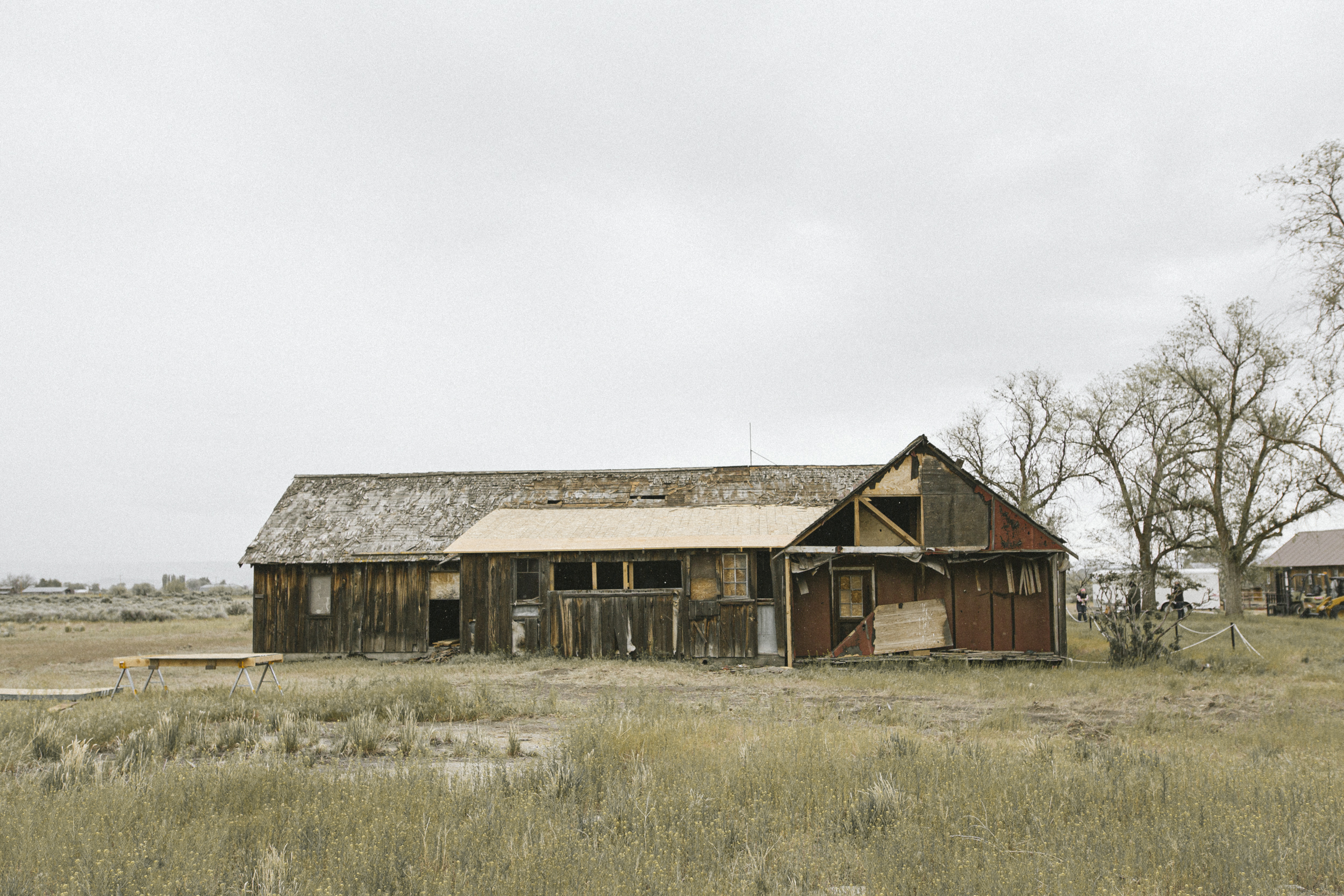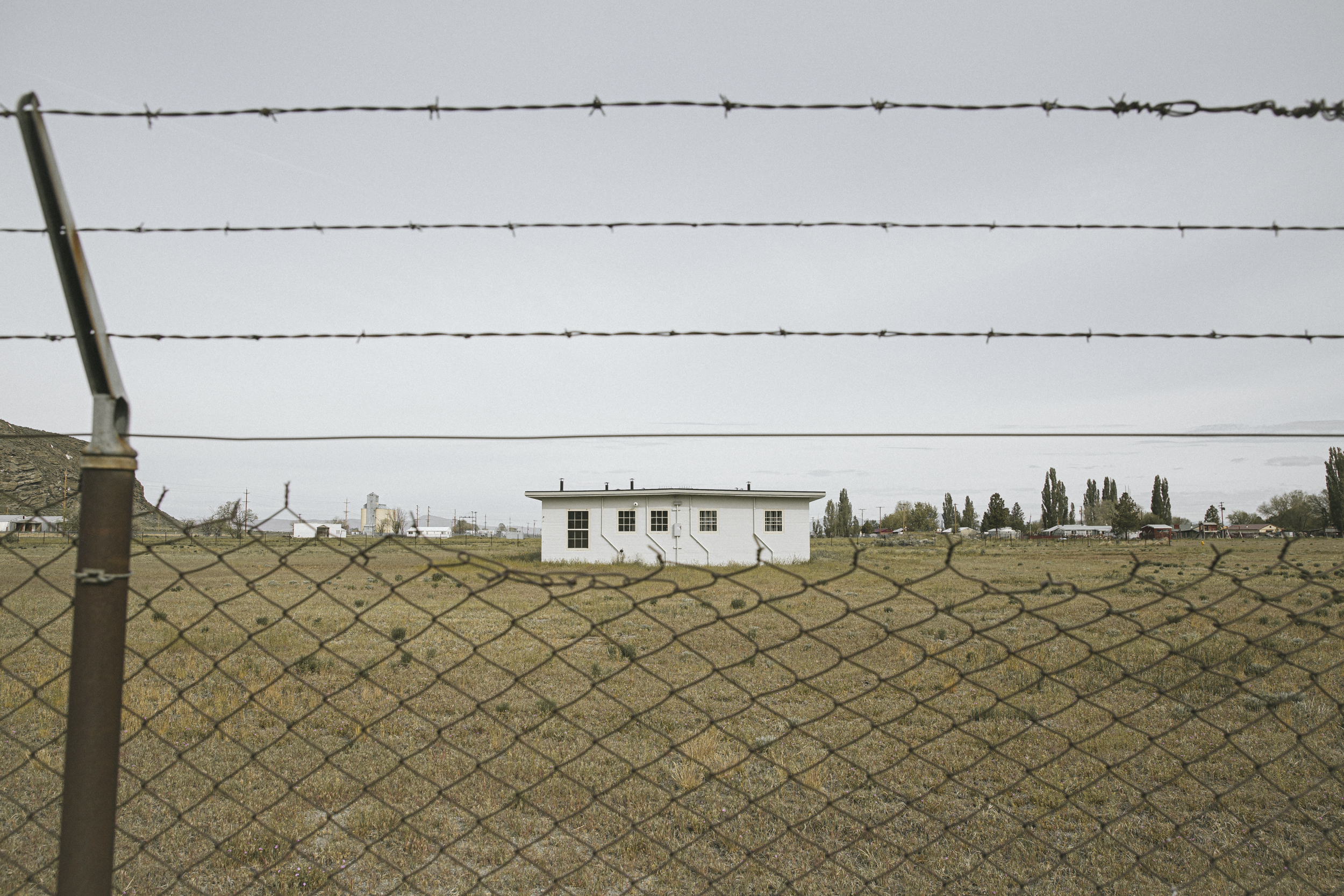
Located near the California-Oregon border, Tule Lake opened on May 27, 1942 as the Tule Lake Relocation Center. A year later, it was designated a maximum-security segregation center to house “disloyal” Japanese Americans and renamed the Tule Lake Segregation Center. It is known as the largest and most controversial of the sites where Japanese Americans were incarcerated during World War II.

The War Relocation Authority‘s master plot plan for Tule Lake. Courtesy of the National Archives and Records Administration.
The concentration camp was situated on 1,110 acres of a dry lake bed in the Cascade mountain range on what was originally the ancestral home of the Modoc Nation. Night time temperatures dipped below freezing for over half of the year, making it one of the coldest places in California. To the west stood an iconic bluff which incarcerees called Castle Rock, and to the east stood a dome-like mountain which incarcerees called Abalone Mountain.

Tule Lake Segregation Center with view of Castle Rock in the distance, March 20, 1946. Courtesy of Densho Encyclopedia.

Tule Lake Segregation Center with view of Castle Rock in the distance, May 27, 2022.
Families were housed in poorly insulated barracks, exposed to the harsh winds and long winters of the Tule Lake basin. The barracks were divided up into four to six family units—separated only by a curtain in some cases—each furnished with a single light bulb, a coal stove, and army cots to sleep in. Meals were served in large mess halls, and communal bathrooms had no dividers between toilets or shower stalls.
Still, incarcerees strived to restore normalcy in their lives by converting recreational buildings into co-op stores, beauty parlors and places of worship. They organized social events like harvest festivals, dances and baseball games to foster a sense of community.

Remains of the mess hall at Camp Tulelake, a former Civilian Conservation Corps camp that later housed Japanese American incarcerees and German P.O.W.’s during World War II.

One of the few remaining structures at Tule Lake Segregation Center. During its operation, the site spanned over 7,400 acres and contained more than 1,700 structures.

Aside from Castle Rock and Abalone Mountain, the canal is one of the few physical features left of the Tule Lake Segregation Center, where over 18,000 Japanese Americans were incarcerated during its peak.

Barracks like this one were divided up into four to six family “rooms” that ranged in size from 16′ x 20′ to 24′ x 20′. They were sided only with tarpaper.
However, local news reports falsely stated that incarcerees were enjoying a leisurely life eating steaks, ham and roasts. Tensions grew as locals witnessed trucks full of food rations driving into the camps while their own supplies dwindled.
By the time the site was designated a segregation center in 1943, tensions were high both outside and within the camp. With the arrival of “disloyals,” the Tule Lake population grew from 15,276 to 18,789. Disputes arose between newcomers and existing residents. Additional troops and tanks arrived on site. A seven foot barbed wire fence was added. The number of guard towers around the segregation center increased from six to 19. Though additional barracks were built, the camp housed almost 4,000 over its intended capacity.
Frustrated by the overcrowded housing, poor sanitation and unsafe working conditions, some incarcerees organized labor strikes and demonstrations. As conflicts grew, the Army took control of the camp and declared martial law on November 13, 1943. Dissidents were isolated in separate detention facilities, including the iconic concrete jail that still stands today.

Known as “a jail within a jail”, this concrete structure was used to segregate dissidents from the rest of the incarceree population from late 1944 until the closure of the Tule Lake Segregation Center in 1946.

A row of cells, each containing four beds, a sink and a toilet. The six-cell jail was designed to hold 24 individuals, but at times held up to 100.

The jail comprised a mens’ wing, womens’ wing and an administrative office. Only men were imprisoned during its operation.

Several markings remain on the walls of the jail cell. This one, found beside a metal cot where incarcerees slept, reads “Show me the way to go to home.”
Under martial law, incarcerees were subject to curfews, barrack raids and a general disruption of daily activities. This combined with food shortages and a subsequent draft notice for young men to join the Army led to further animosity toward the U.S. authorities. Some joined incarceree-led “pro-Japan” organizations to prepare for a life in Japan.
On July 1, 1944, President Roosevelt signed the Renunciation Act of 1944. Rumors spread throughout the camp that Tule Lake incarcerees would not be welcomed back into society after the war. In the following months, thousands of incarcerees renounced their U.S. citizenship. Some feared hostility after their release; others wanted to prevent being separated from their Issei family members, who were barred from naturalization.
Many felt that they had no other choice.
Why is Tule Lake significant?

Two patrolmen escort a “defiant enemy alien” out of the military stockade. June 24, 1945. Courtesy of the National Archives and Records Administration.
The War Relocation Authority distributed the Application for Leave Clearance form—later called the “loyalty questionnaire“—to their ten camps in February 1943 to determine which incarcerees were loyal or disloyal to the U.S. government for potential military recruitment. It included two questions that caused confusion within the camp population:
Question #27: “Are you willing to serve in the armed forces of the United States on combat duty, wherever ordered?”
Question #28: “Will you swear unqualified allegiance to the United States of America and faithfully defend the United States from any or all attacks by foreign or domestic forces, and foreswear any form of allegiance or obedience to the Japanese emperor, or any other foreign government, power or organization?”
Those who answered “no” or declined to give an affirmative answer to these two questions—dubbed “no-no’s“—were deemed “disloyal” to the U.S. government and sent to the Tule Lake Segregation Center, a maximum security camp with a military stockade. Angered by their unjust treatment, “pro-Japan” organizations like the Hoshi Dan emerged out of the incarceree population. The “no-no’s” comprised about 12,000 out of the 78,000 people to whom the questionnaire was distributed.
When the President signed the Denaturalization Act of 1944, thousands of Tule Lake incarcerees renounced their U.S. citizenship. Many chose renunciation as a form of protest to their unconstitutional treatment, while others denaturalized fearing for their safety and separation from their families after the war. Between 1944 and 1946, 5,589 U.S. citizens renounced their citizenship. For decades after the war, “no-no’s” and renunciants were stigmatized by the broader public as being “traitors” to the U.S. government.



